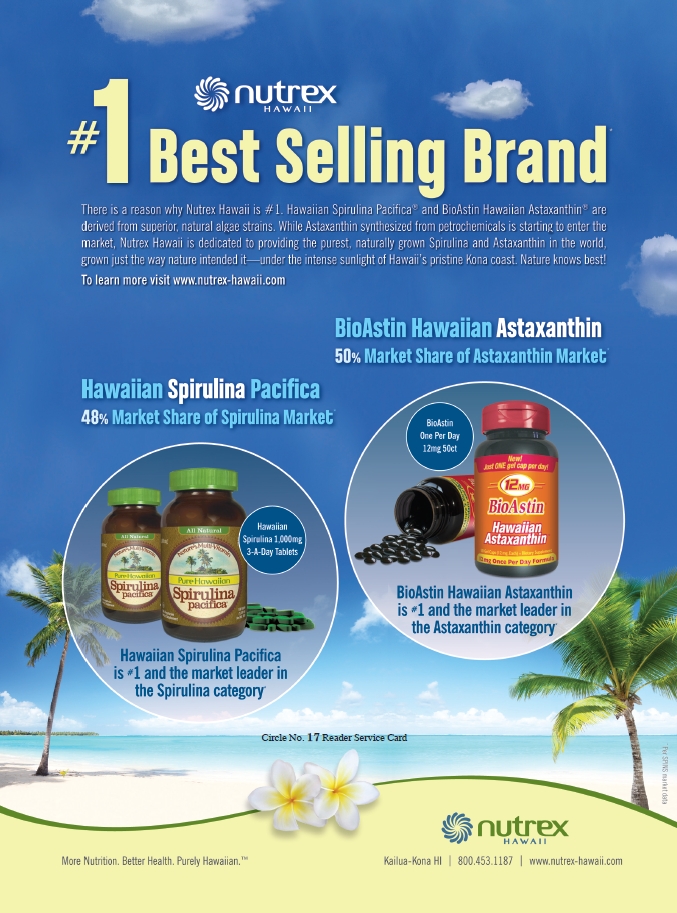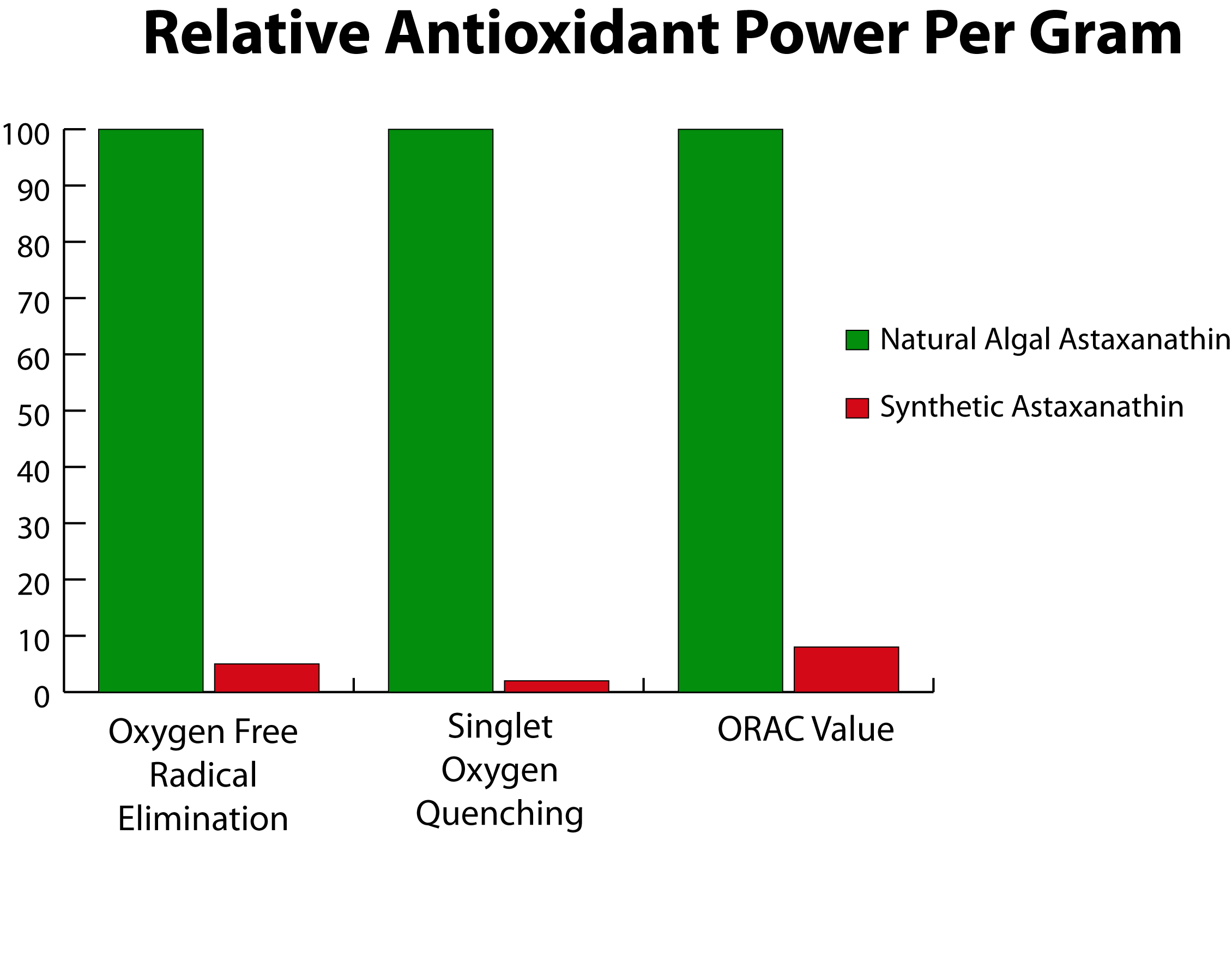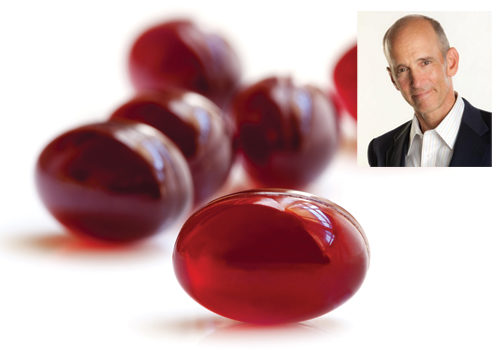How is it possible that a supplement can be good for your brain, your skin and also your arthritic toe? Believe it or not, natural astaxanthin can help all of these parts of your body and a lot more. In fact, there are too many documented health benefits of natural astaxanthin to fit into this article, so for now we’ll focus on three of them:
• Joint health
• Skin health
• Brain health
I have been a practicing physician for over three decades and have the most visited natural health site in the world at Mercola.com, but in all my studies and experience, there is no supplement that surpasses natural astaxanthin’s antioxidant benefits. Let’s look at what natural astaxanthin is and find out a little bit about why it’s so different from synthetic astaxanthin.
Your Ultimate Joint, Skin and Brain Protector
Natural astaxanthin is extracted from a species of microalgae called Haematococcus pluvialis. The commercial producer that I prefer grows Haematococcus in Hawaii in hygienic ponds that are tested every day. Here’s an amazing fact about natural astaxanthin: It’s so incredibly protective that the algae can survive dormant for over 40 years with no food or water and in intense heat or extreme cold. Then, when they’re put back in water and fed, they start swimming around again as healthy as they were 40 years earlier!
Natural astaxanthin acts like a protective force field to guard algae cells from life-threatening conditions. The reason it’s so protective is most likely due to its incredibly strong antioxidant properties and its anti-inflammatory activity, which are the same things that make it such a great and versatile nutrient for humans, too (1).
Haematococcus is a green algae, normally. During the first few stages of growth at the farm in Hawaii, the algae are always covered from the sun. They’re fed nutrients and they swim in pure Hawaiian water where they thrive. But in the final stage of growth, the algae are put out in the intense Hawaiian sun and are no longer given any nutrients. In other words, they’re starved and subjected to extreme UV rays.
Because of this extreme stress, the algae start to hyperaccumulate natural astaxanthin as a survival mechanism. Within seven days, the algae turn from green to bright red as astaxanthin accumulates. Then, the algae are harvested, dried and put through a solvent-free, supercritical extraction process using only carbon dioxide to safely extract the astaxanthin. But even if the algae were left out in the sun starving and the water in the ponds dried up, they could survive from now until at least the year 2053. Then if you put them back in water, covered them from the sun, and fed them, they would start swimming around again as healthy as could be. Natural astaxanthin is one incredibly protective nutrient for the algae, and fortunately, scientific research is showing us how incredibly protective it is for humans, too.
When you ingest a capsule of natural astaxanthin, it is utilized throughout your body—it gets into your muscles, your skin, your joints, your heart, your eyes—and it protects cells throughout your body just as it protects the algae cells.
Natural astaxanthin is a unique antioxidant in that it can protect both the fat-soluble and the water-soluble parts of cells. Most antioxidants only protect one or the other, but astaxanthin can span the cell membrane and have one end of the molecule in the fat-soluble part and one end in the water-soluble part, thereby protecting the entire cell. And as an antioxidant, it’s been shown in many different tests to be the very strongest natural antioxidant. For example, in singlet oxygen quenching, it ranges from 550 times stronger than green tea catechins to 800 times stronger than CoQ10 to an incredible 6,000 times stronger than vitamin C (1). This is one powerful antioxidant.
Be Sure You Get Natural, NOT Synthetic Astaxanthin
A major supplement ingredient supplier recently announced that it will begin marketing synthetic astaxanthin (which they erroneously call “Nature Identical”) for human use. Synthetic astaxanthin has been used for many years in the animal feed industry as a means of artificially coloring the flesh of salmon.
 Farm-raised salmon have a big acceptance problem that farmers overcome with synthetic astaxanthin; because these salmon don’t eat the diet rich in natural astaxanthin that wild salmon do, their flesh is a bleached-out opaque color that would never appeal to shoppers at the local supermarket. So, the farmers mix synthetic astaxanthin in their feed so that their flesh comes out looking closer to what a wild salmon’s flesh looks like, pinkish (or as many call it, “salmon colored”).
Farm-raised salmon have a big acceptance problem that farmers overcome with synthetic astaxanthin; because these salmon don’t eat the diet rich in natural astaxanthin that wild salmon do, their flesh is a bleached-out opaque color that would never appeal to shoppers at the local supermarket. So, the farmers mix synthetic astaxanthin in their feed so that their flesh comes out looking closer to what a wild salmon’s flesh looks like, pinkish (or as many call it, “salmon colored”).
Synthetic astaxanthin is synthesized from petrochemicals in a factory. That’s right—the same stuff you put into your car is what synthetic astaxanthin is made from. It’s pretty scary when you think about it. There are three huge differences between natural astaxanthin and synthetic astaxanthin molecules:
• The molecules are shaped differently.
• The natural molecule comes naturally complexed with other natural carotenoids in a synergistic “carotenoid cocktail.”
• Natural astaxanthin from algae is predominantly esterified with a fatty acid molecule attached to the end of the astaxanthin molecule.
How they can market synthetic astaxanthin that is synthesized from petrochemicals as “Nature Identical” when the two forms are completely different is something that I’ll never understand. Frankly, it shouldn’t be allowed. And the synthetic process used to produce other synthetic nutrients invariably leaves residual solvents and reagents in the final product, which will probably be the same case with synthetic astaxanthin.
The source of synthetic astaxanthin and the vast differences between the natural and synthetic molecules aren’t the only things that separate synthetic from natural astaxanthin. The vital difference between the two is in effectiveness. The benefits of natural astaxanthin stem from its superior antioxidant capacity and its anti-inflammatory activity, the two of which are interrelated and codependent. But when you measure synthetic astaxanthin against natural astaxanthin as an antioxidant, you see just how different they really are. Recent research in the peer-reviewed journal Nutrafoods found:
• In a side-by-side measure of free radical elimination at Creighton University, natural astaxanthin proved to be 20 times stronger than synthetic astaxanthin.
• In side-by-side testing at leading antioxidant research lab Brunswick Laboratories, natural astaxanthin was 55 times stronger in singlet oxygen quenching than synthetic astaxanthin.
• ORAC testing at Brunswick Laboratories showed that natural astaxanthin is 14 times stronger as an antioxidant than synthetic astaxanthin (2)
The logical question follows that if synthetic astaxanthin has only a fraction of the antioxidant power of astaxanthin from algae, how can it possibly work as well for joint health, skin health, brain health or any of the other documented health benefits of natural astaxanthin? The answer is that it probably doesn’t, and since there has never been any research showing any health benefits for synthetic astaxanthin in humans, there’s no proof that this petrochemical derivative can do anything at all for you.
Not only is there a grave question about synthetic astaxanthin’s effectiveness as a health-giving supplement, but there is also a question about its safety. There has been no safety testing in direct human use, which is frightening when you think about the health issues with other synthetic carotenoids such as beta carotene and canthaxanthin.
In the famous “Finnish Smokers’ study” in the 1990s, synthetic beta carotene actually increased the incidence of cancer.
On the other hand, published medical research is full of studies showing that natural beta carotene helps prevent cancer. Another carotenoid that is even more closely related to astaxanthin is canthaxanthin. Once again, the synthetic form showed some serious health concerns: Synthetic canthaxanthin use by humans resulted in crystals forming in the retina of consumers’ eyes. These crystals took 20 years to disintegrate. The bottom line is that extensive, long-range safety studies should be conducted with synthetic astaxanthin in humans to prevent any potential problems.
On the other hand, natural astaxanthin from algae has been on the market for over 15 years without any safety concern. You can’t beat Mother Nature, and frankly, supplement companies should stop trying. As far as what retailers and consumers should do, I have three words of caution: avoid cheap imitations! Make sure you’re getting natural astaxanthin harvested from microalgae that has been super-critically extracted without the use of solvents. That’s the form that has been safety tested and shown to have a multitude of potential health benefits.
Natural Astaxanthin Can Also Provide You with Pain Relief
Natural astaxanthin is a safe and natural anti-inflammatory. It works on several different inflammatory mediators in a safe, gentle manner rather than working on one mediator in an intense manner as over-the-counter and prescription anti-inflammatories do (3, 4). But this is the beauty of natural astaxanthin—it won’t work as quickly as anti-inflammatory drugs; in fact, it can take from about two weeks to almost eight weeks for people to feel reduced pain levels as we’ve seen in human clinical trials as well as consumer surveys (1).
But after it builds up in your system, it works very well on a variety of painful conditions; and because it works on many different causes of inflammation and much more slowly, it has never been found to have any side effects or contraindications. And as you know from the Vioxx debacle, anti-inflammatory drugs can have life-threatening side effects.

|
|
| In every test of antioxidant strength, natural astaxanthin was far superior to synthetic astaxanthin. |
Your Safe and Effective Internal Sunscreen and Natural Beauty Pill
There has been some talk of Hollywood actresses and supermodels taking Hawaiian astaxanthin as an internal beauty pill. England’s second largest circulation newspaper reported that Gwyneth Paltrow and Heidi Klum use natural astaxanthin because it helps reduce wrinkles and improve skin moisture and elasticity. And this has been documented in a placebo-controlled study at only 4 mg per day over six weeks (5). It’s also been documented at 4 mg per day to increase the amount of time before people sunburn when exposed to UV light, making it a natural “internal” sunscreen. In fact, a U.S. patent was awarded based on a human clinical trial showing this effect (6).
Protect Your Brain with Natural Astaxanthin
Your brain suffers an onslaught of exposure to oxidation, and it needs help to keep functioning well as you grow old. Neurodegenerative diseases are increasing faster than just about any other disease, so protecting the health of your brain will become one of the most important things you can do to live a long and healthy life. There have been plenty of animal trials showing neuroprotective effects of natural astaxanthin; fortunately, there have now been two recent human clinical trials in this area, too.
One study took 10 elderly subjects with age-related forgetfulness and gave them 12 mg of astaxanthin each day for 12 weeks. The researchers found efficacy for age-related decline in cognitive and psychomotor function (7).
Another study was randomized, double-blind and placebo-controlled; this was a state-of-the-art study in human volunteers. After 12 weeks at either 6 mg or 12 mg daily astaxanthin dosages, subjects were found to have decreased levels of dangerous fat oxidation byproducts, which accumulate in people suffering from dementia, as well as improved red blood cell antioxidant status. The researchers concluded that astaxanthin supplementation may contribute to the prevention of dementia in humans as we age (8).
Consider Natural Astaxanthin For Your Primary Antioxidant Needs
I’ve only touched on a few of the many potential health benefits of natural astaxanthin. But with this alone, you can see that it’s an excellent, protective nutrient that can potentially help you in many different ways, from your head to your toes. I typically recommend 4 mg per day for everyone, and up to 12 mg for anyone over 40. WF
and up to 12 mg for anyone over 40. WF
Dr. Mercola is among the most trusted and followed health experts in the world. He’s a New York Times best-selling author and has one of the most visited health Web sites on the Internet, which gets 18 million visits per month. Dr. Mercola has been featured in Time Magazine, The Los Angeles Times, appeared on many television shows including The Dr. Oz Show, Fox News, The Today Show and CNN. More people visit mercola.com for safe, inexpensive natural solutions to their health care questions than any other Web site in the world.
References
1. B. Capelli and G. Cysewski, Natural Astaxanthin: The World’s Best Kept Health Secret. (Cyanotech Corporation, Kailua-Kona, HI 2013), ISBN 978-0-9792353-0-6.
2. B. Capelli, D. Bagchi and G. Cysewski, “Synthetic Astaxanthin Is Significantly Inferior to Algal-Based Astaxanthin as an Antioxidant and May Not Be Suitable as a Human Nutritional Supplement,” Nutrafoods 12 (4) 145–152 (2013), DOI 10.1007/s13749-013-0051-5.
3. S. Lee, et al., “Astaxanthin Inhibits Nitric Oxide Production and Inflammatory Gene Expression by Suppressing IkB Kinase-dependent NFR-kB Activation,” Molecules and Cells 16 (1), 97–105 (2003).
4. K. Ohgami, et al., “Effects of Astaxanthin on Lipopolysaccharide-Induced Inflammation In Vitro and In Vivo.” Investigative Ophthalmol. Visual Sci. 44 (6), 2694–2701 (2003).
5. E. Yamashita, “The Effects of a Dietary Supplement Containing Astaxanthin on Skin Condition,” Carotenoid Sci., 10, 92–95 (2006).
6. T. Lorenz, “Method for Retarding and Preventing Sunburn by UV Light,” U.S. Patent #6,433,025, August 13, 2002.
7. A. Satoh, et al., “Preliminary Clinical Evaluation of Toxicity and Efficacy of a New Astaxanthin-rich Haematococcus pluvialis Extract,” J. Clin. Biochem. Nutr. 44 (3), 280–283 (2009).
8. K. Nakagawa, et al., “Antioxidant Effect of Astaxanthin on Phospholipid Peroxidation in Human Erythrocytes.” Brit. J. Nutr. 105 (11), 1563–1571 (2011).
Published in WholeFoods Magazine, April 2014









